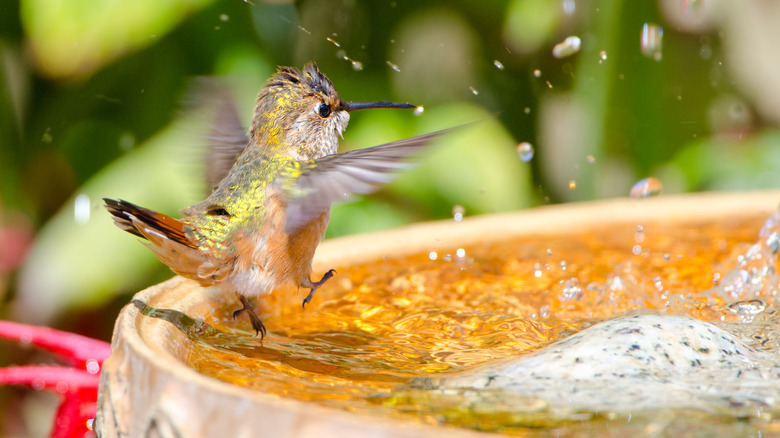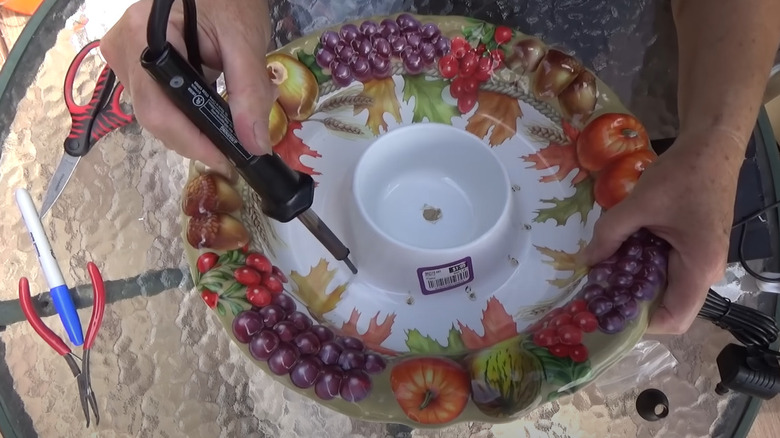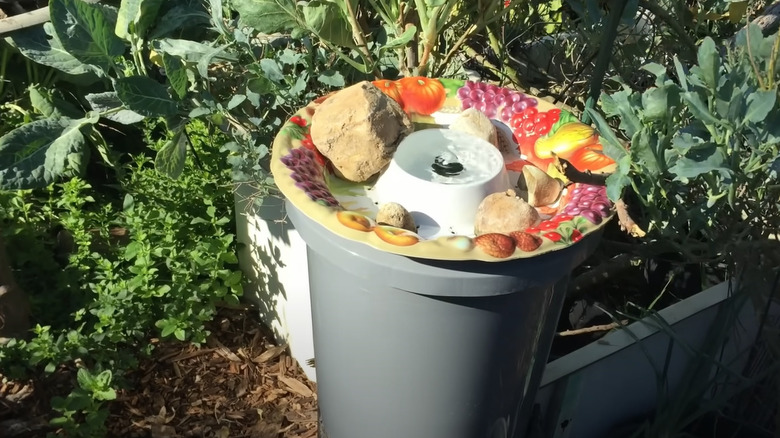Repurpose A Chip-And-Dip Bowl From Dollar Tree Into A Hummingbird Attraction
We may receive a commission on purchases made from links.
Isn't it just fantastic having those little hummingbirds zooming and chirping around your garden? They're not just a treat for the eyes and ears; they bring some solid perks too. Think about it: they help pollinate your fruiting plants so your garden stays giving. Plus, they munch on those pesky insects like aphids and beetles that bug your veggies. Now, if you're looking to attract more hummingbirds to your garden, adding a bird bath is pretty much a no-brainer. But why splurge on a store-bought one when you can whip up something unique using a chip-and-dip bowl you snagged from the Dollar Tree, with just a few extra bits like a mini submersible pump?
A hummingbird bath isn't just about giving these adorable birds a spot to splash and hydrate. It also sprinkles a little magic over those dull corners of your yard. And while picking one up from the store sounds easy, it can be a bit harsh on your wallet. Take the Ribgwo Solar Bird Bath Fountain for Hummingbirds for instance — it will set you back $33.99 on Amazon. But if you go DIY, you're looking at spending about $11 on a mini submersible pump like the Mellful Solar Bird Bath Fountain Pump from Walmart. Plus, it's a breeze to craft, actually taking less than 30 minutes. As for why you should use a chip-and-dip-bowl, it creates just the right depth of water for your feathered friends, while the pump keeps the water flowing with no fuss.
Making a DIY hummingbird bath with Dollar Tree chip-and-dip bowl
For this DIY water feature for your backyard, you will need a chip-and-dip tray, a flowerpot (a bucket works just fine too), a soldering iron, scissors, rubber tubing, and a solar pump kit. Kick off by popping a hole in the middle of the chip-and-dip bowl with your soldering iron. But to make this a breeze, draw a little circle where you're planning to cut, matching the size with the rubber tubing's diameter. Done with the middle hole, carefully burn some extra holes around the outer dip section. However, keep them close to the bowl's center, because you want the water to fall back into the base (flowerpot or bucket), not splashing all over the ground.
Next up is getting the rubber tubing connected to the submersible pump. In your solar pump kit, you'll find a gizmo (kind of a small funnel with a lid) designed to connect the to rubber tubing. Now, here's a tip: widen those funnel lid holes a tad. After all, you don't want a water fountain on steroids but a chill flow. Once done, slide the funnel piece snugly through the bowl's center hole and connect its narrower end to the rubber tube beneath the bowl. The last bit is pretty much plug-and-play; just arrange all the parts you've assembled, including dropping the solar pump into your water-filled base, then let the sun do its magic. And there you have your DIY hummingbird bath.
Extra hacks for this DIY hummingbird bath
When hummingbirds pause for a sip or a dip, they're pretty much letting their guard down, which can be risky business — especially since the splashy sounds of a good bath could invite predators. A winning move for these petite nectar lovers is setting them up in a safe spot for their splash time. You want to aim for a shadowy nook close to the safety net of trees and bushes. However, steer clear of potential hiding spots for predators like cats (think towering grass and low bushes). In addition, consider throwing in nest-building plants for hummingbirds in your garden (cue red buckeye, poplar, and hawthorn).
You also want to scatter a few stones around the bowl's cone. They're more than just a pit stop for the hummingbirds; it's their lookout point and grooming station to fluff post bath. Don't find large stones appealing? No sweat — a few pebbles or river rocks work just as well while also adding a dash of elegance to your feathered friends' pool.
Fresh water is non-negotiable for these tiny flyers. Left unattended, your birdbath could turn into a murky puddle teeming with algae and pathogens, which are bad news for hummingbirds. So, gear up with a brush and a hose for a routine sparkle-up, occasionally pairing them with a mild disinfectant. By keeping the water circulating, a solar-powered mini pump prevents ice formation. But if you don't have one? A battery-operated pump does the trick just fine.



